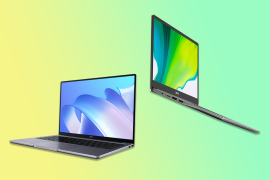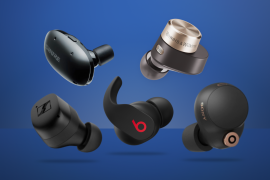Acer Swift Go 14 hands-on review: Meteoric
Lightweight laptop brings AI-assisted Intel Core Ultra CPUs
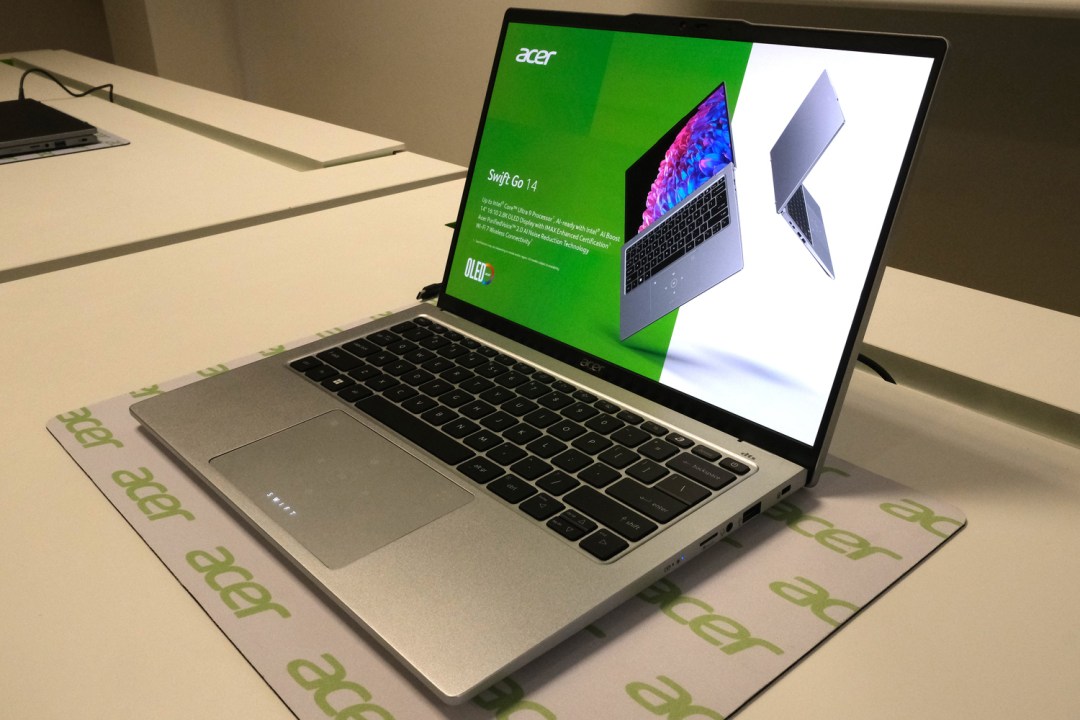
Initial Stuff Verdict
A streamlined ultraportable that promises plenty of power, thanks to new Intel silicon, and a gorgeous OLED display.
Pros
- OLED screen is a stunner
- Intel Ultra CPUs sound beefy
- Dual-purpose touchpad is neat
Cons
- Real-world battery life is an unknown
- Prices still TBC
Introduction
2024 is going to redefine what the tech world deems a mid-range laptop. Case in point: the Acer Swift Go 14. This compact ultraportable doesn’t skimp on screen, construction or connectivity, and is also one of the first in line for Intel’s new Meteor Lake processors. As well as bringing AI acceleration to the mainstream, they should deliver big gains in performance and battery life.
Acer revealed the laptop back in December, alongside Intel’s Core Ultra CPU launch, but this is the first chance we’ve had to try one out. It should be on sale in the US by the time you read this, with prices starting from $800, and should reach Europe and the UK shortly for around €1199/£899.
That puts it in the firing line of Apple’s fantastic MacBook Air (M2), and a whole host of machines revealed around this year’s CES show in Las Vegas. Does the Swift Go 14 do enough to stand out? Here are my early hands-on impressions.
How we test laptops
Every laptop reviewed on Stuff is used as our main device throughout the testing process. We use industry-standard benchmarks and tests, as well as our own years of experience, to judge general performance, battery life, display and sound quality. Manufacturers have no visibility on reviews before they appear online, and we never accept payment to feature products.
Find out more about how we test and rate products.
Design & build: open wide
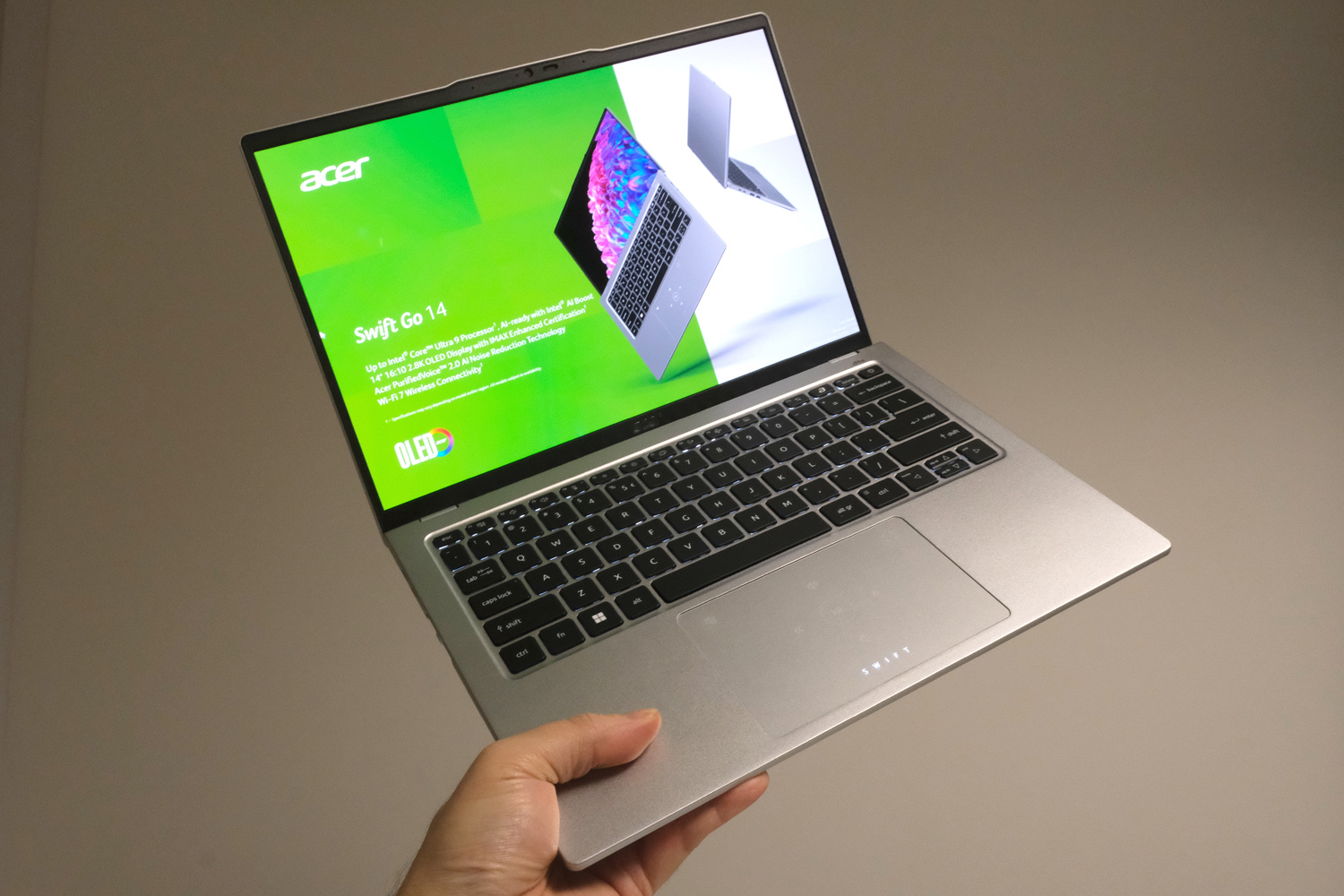
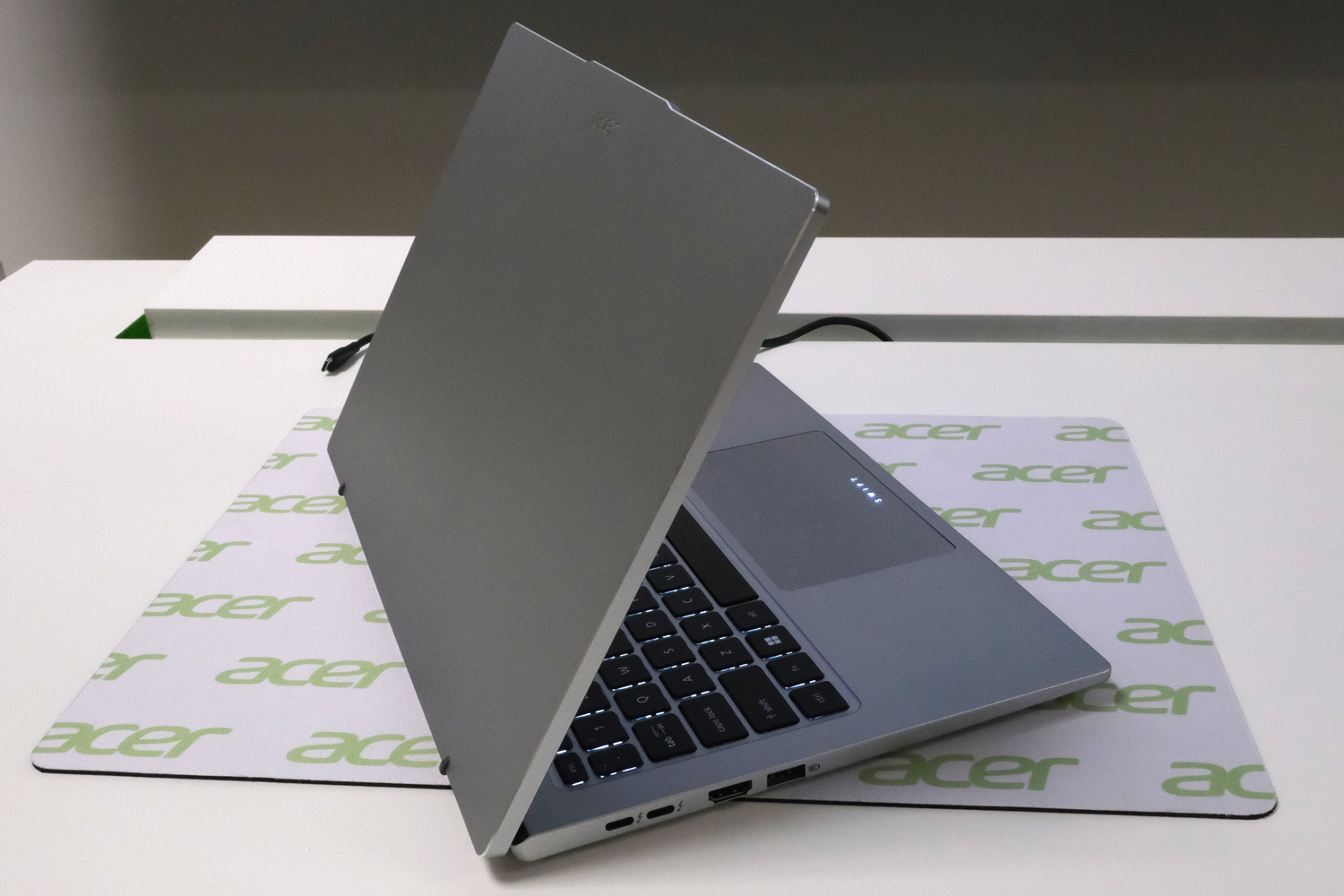
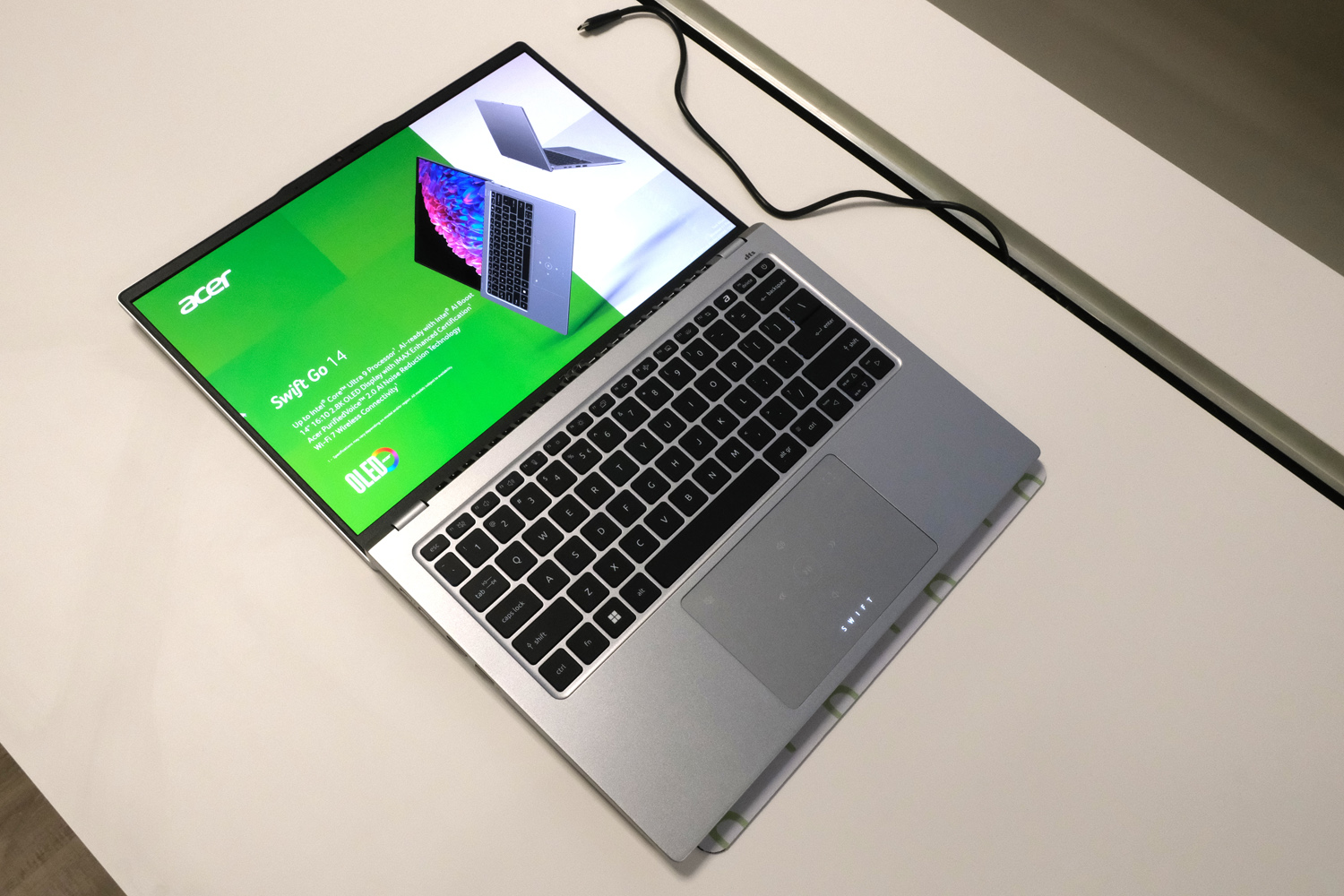
With an all-aluminium build, slim 14.9mm depth and svelte 1.32kg weight, the Acer Swift Go 13 is a laptop I would have no qualms taking just about anywhere. It feels suitably high-end, with no obvious flexing, and the modest logo on the lid is a nice touch. Sure, a MacBook Air is thinner and lighter still, but there’s very little in it.
You’re still getting a fully-featured machine here, too. Two USB-A ports, twin Thunderbolt 4/USB-Cs (which can also charge the laptop from a beefy enough power brick or bank), a full-size HDMI 2.1 video output and a 3.5mm headphone port provide just about everything you’d need for on-the-go working, without having to resort to a dongle. There’s also a microSD card reader, although I firmly believe a full-size SD would’ve been a more useful inclusion.
Open the laptop up and the screen bezels are satisfyingly slim, while still making room for a 1440p webcam at the top. This is able to make use of Acer’s AI-accelerated PurifiedVoice noise reduction and PurifiedView object detection tech for blurring backgrounds, keeping you in frame and even correcting your gaze while on video calls.
Screen & sound: not a tough choice
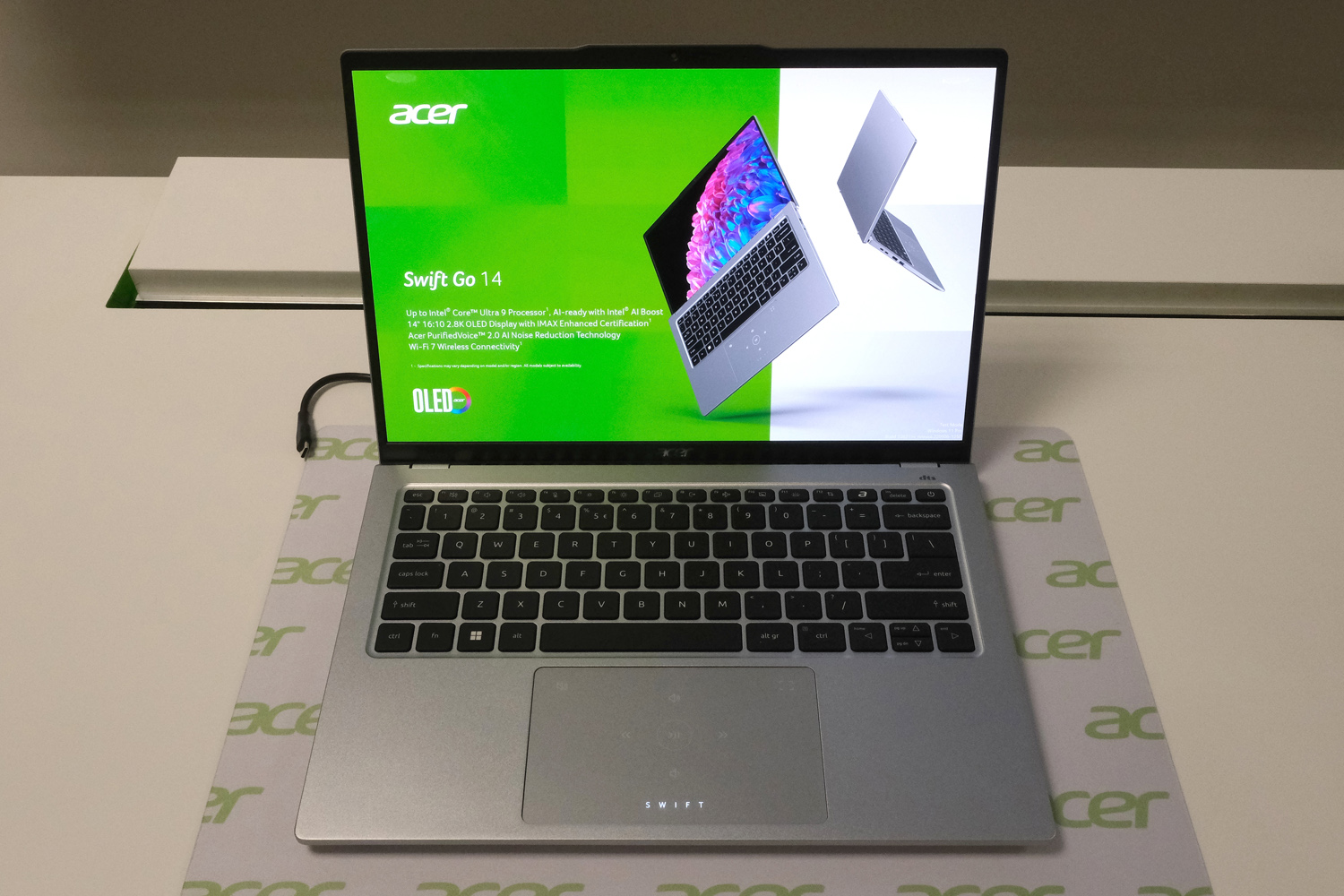
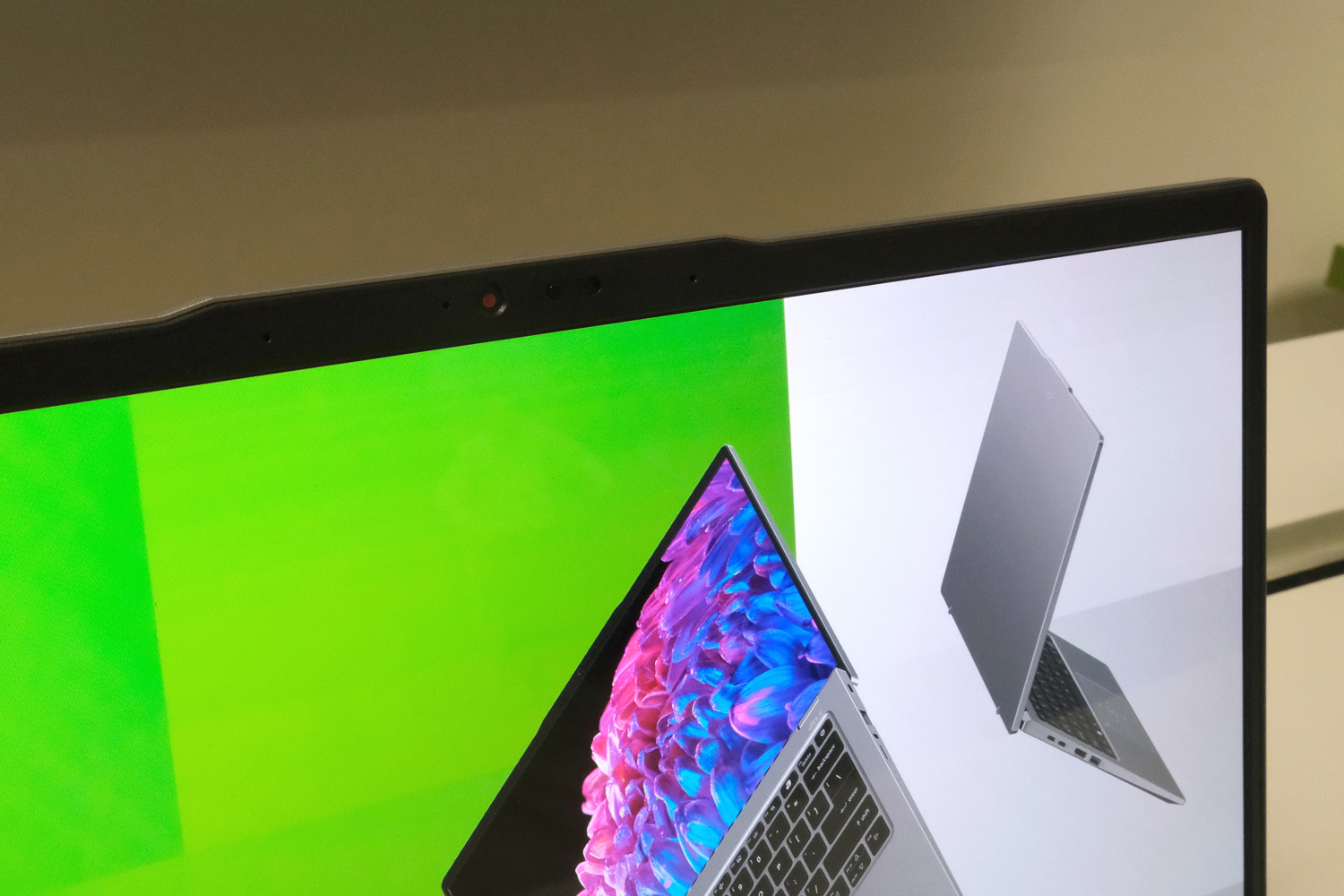
The Swift Go 14 will be sold with a 1200p IPS LCD touchscreen in certain markets, but even with limited time in front of a sample I know that’s not the one you want. The 14in, 2880×1880 resolution OLED panel is clearly the better option, with wonderfully vibrant colours, exceptional contrast and stellar viewing angles.
It’s Display HDR True Black 500 certified, covers 100% of the DCI-P3 colour space, and has also been given the IMAX Enhanced seal of approval, so should have streaming videos looking their best. I was glad to see a 90Hz refresh rate, too; this might not be as speedy as the panels found on gaming laptops, but it meant mouse movement and page scrolling was noticeably smoother than the 60Hz laptop I was working on earlier that day.
2023 saw the 16:10 aspect ratio become the new normal for laptop screens, and Acer has followed suit. It gives the Swift Go 14 a work-friendly display that can fit two documents side-by-side with ease, and is usefully taller when web browsing or writing multi-page docs.
I didn’t get a proper chance to blast the built-in speakers, which only have so much physical space inside the chassis to pump out sound. At least there’s a 3.5mm headphone port for personal listening, as well as built-in Bluetooth.
Keyboard & touchpad: see the light
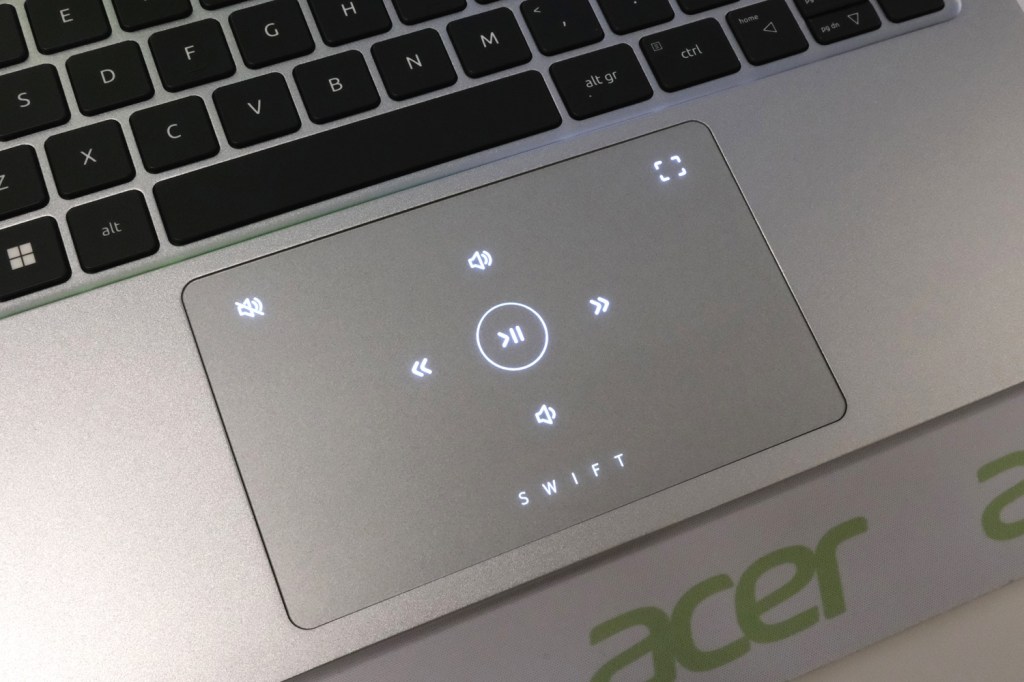
With Island-style keys and full white LED backlighting, the Swift Go 14’s full-size QWERTY keyboard should feel familiar to anyone who’s used an Acer laptop recently. There’s no numerical keypad (hardly a shock for a 14in laptop) and the function keys are half-height, but I had no trouble tapping out a few sentences without typos.
There’s a decent amount of key travel for such a thin machine, and as long as you don’t hammer each key home they shouldn’t bottom out too severely.
Really, though, it’s the touchpad that’s the main attraction. It’s 44% larger than previous Swift models, and the illuminated SWIFT logo hints at its dual function as a media controller. Slide a finger along the logo and the pad lights up, putting track skip, play/pause, volume adjustment and mute keys within easy reach.
I’ve seen similar dual purpose ‘pads on Asus machines, but those turned the touchpad into a numerical keypad; if you’re not regularly opening up spreadsheets, I think this approach is far more useful. The touchpad itself is also made from OceanGlass, recycled from ocean-bound plastic. It felt smooth under my fingers, with minimal friction, and recognised multitouch gestures pretty much flawlessly.
Performance & battery life: enter AI
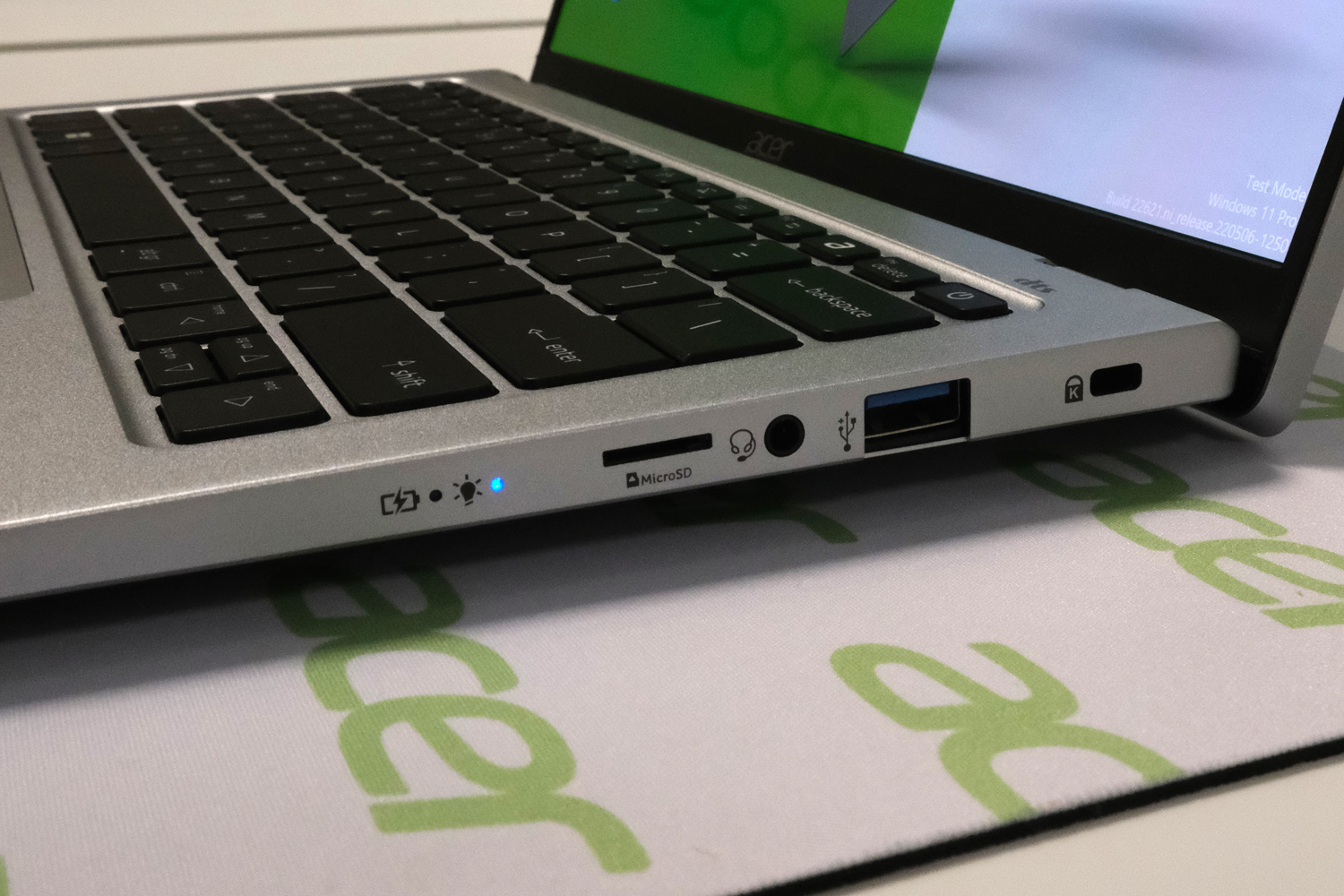
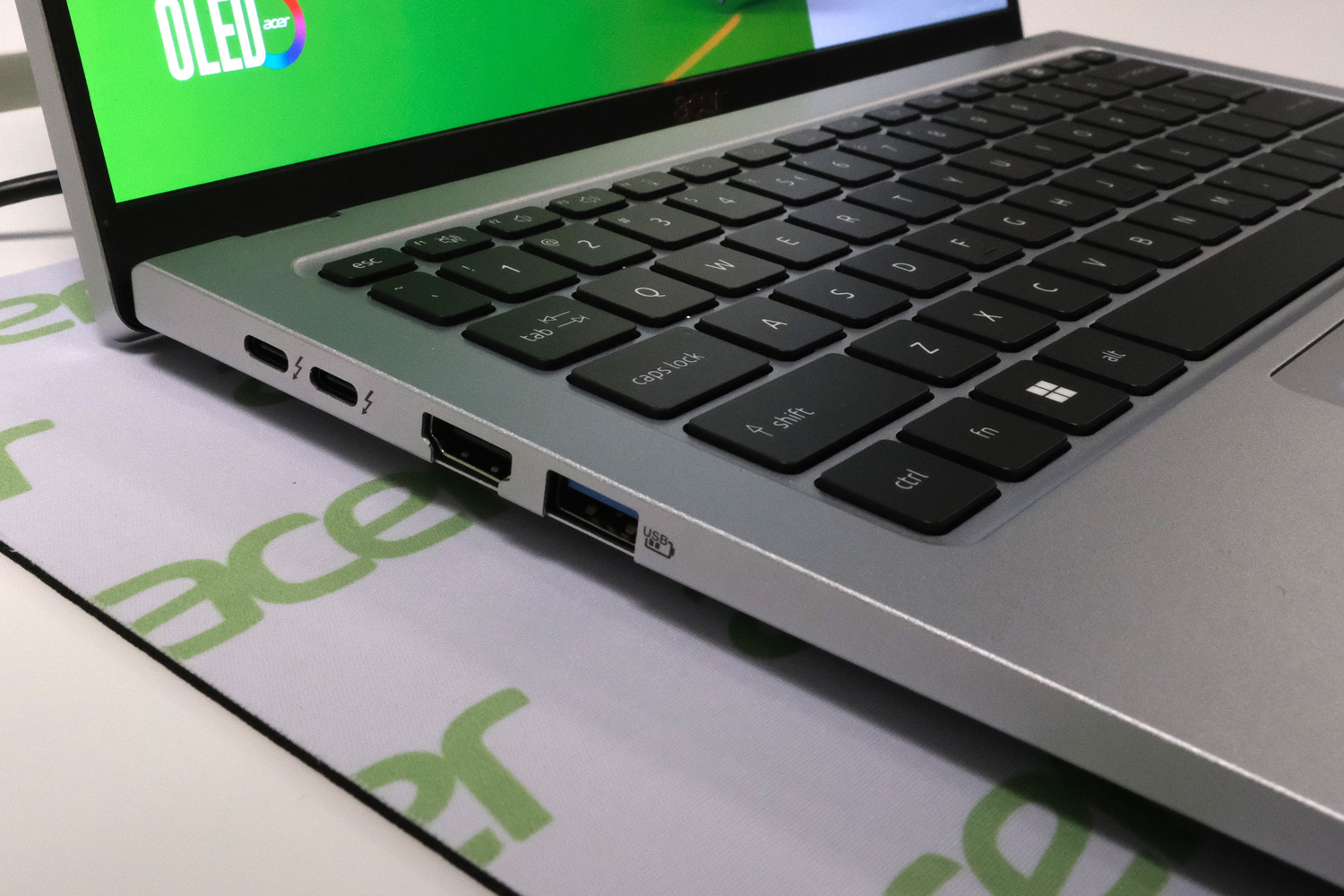
The Swift Go 14 is one of the first laptops I’ve tried with Intel’s ‘Meteor Lake’ Core Ultra CPUs inside. Depending on spec you can get one with an Ultra 7 or Ultra 9 chip, with up to 16 cores, Intel Arc onboard graphics and an NPU co-processor that can speed up AI-based tasks. Add in a minimum of 16GB of RAM and a speedy NVMe SSD, and this laptop should comfortably power through any desktop task.
Everything felt speedy and responsive on the Windows desktop during my brief demo, although admittedly there weren’t many demanding apps I could use to properly test performance. I’m interested to see what the NPU can do; apparently the processor can offload certain tasks to it, but I didn’t get to see it in action.
Equally intriguing is the promise of Intel Arc graphics, which borrow tech from the firm’s desktop GPUs. They should be able to deliver playable frame rates in newer titles at sensible graphics settings and resolutions, based on early reports and benchmark results. That’s impressive for an ultraportable.
Finally, Acer reckons the Swift Go 14’s battery should be good for twelve and a half hours away from the mains. That sounds like a decent enough lifespan, and enough for a full day’s work without needing to plug in, but whether that will translate to real world use will have to wait for a full review.
Acer Swift Go 14 initial verdict

With exact specs and prices still TBC, it’s tricky to say how the Acer Swift Go 14 stacks up against its ultralight competition. There will be no shortage of rivals launching in early 2024, now that Intel has officially launched its Core Ultra chips, and the MacBook Air continues to loom large over the class.
I’m a big fan of the Acer’s multi-purpose touchpad, though, and the OLED screen option is especially easy on the eyes. If it can deliver on its battery life claims (and those AI enhancements start to show their usefulness) I could see it being a very capable machine for on-the-go working.
Acer Swift Go 14 technical specifications
| Screen | 14in, 1920×1200 IPS touchscreen / 14in, 2880×1880 OLED |
| CPU | Up to Intel Core Ultra 9 |
| Memory | Up to 32GB |
| Graphics | Intel Arc onboard |
| Storage | Up to 1TB |
| Operating system | WIndows 11 |
| Battery | Up to 12.5hrs |
| Dimensions | 14.9mm thick, 1.32kg |


